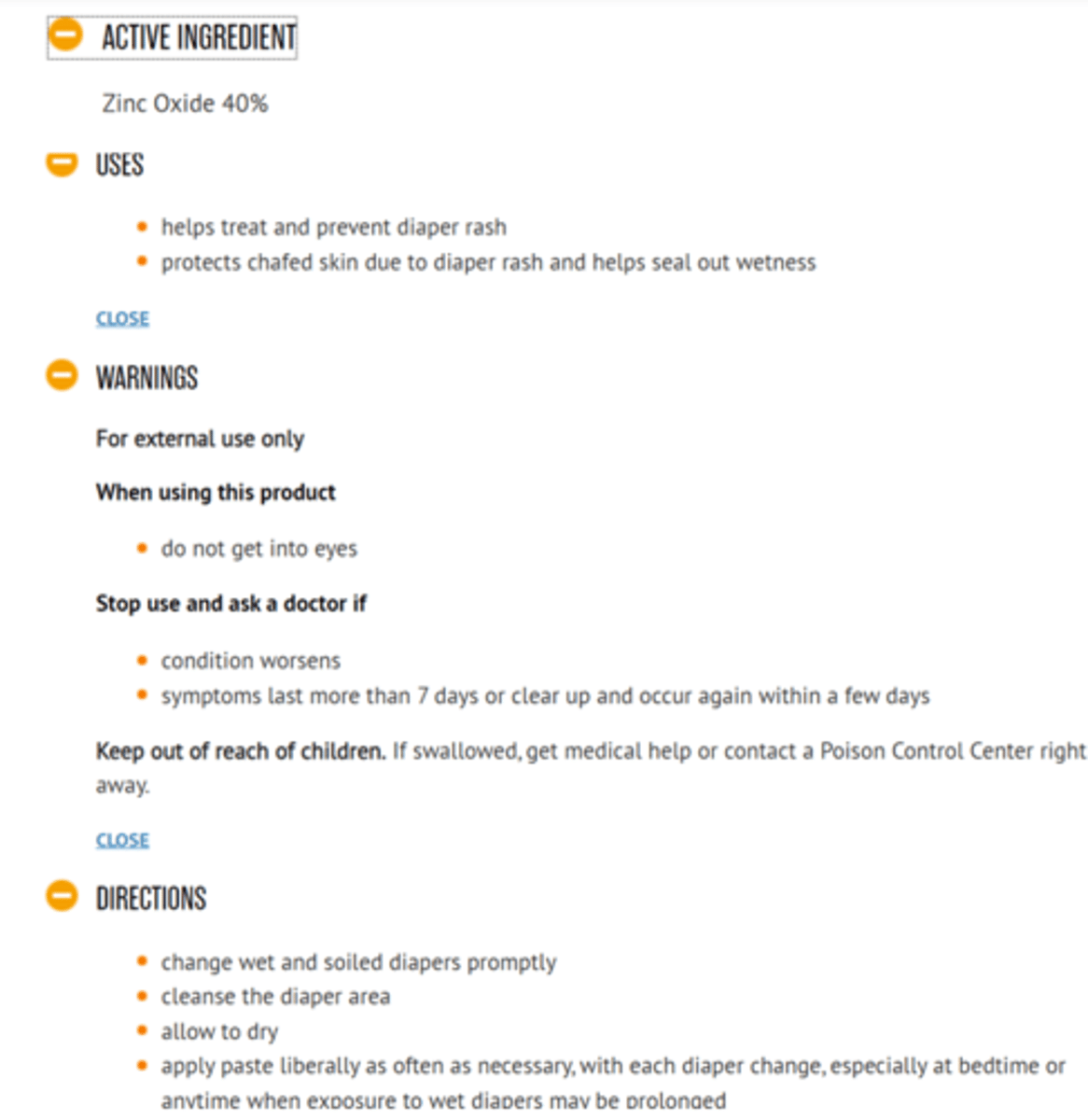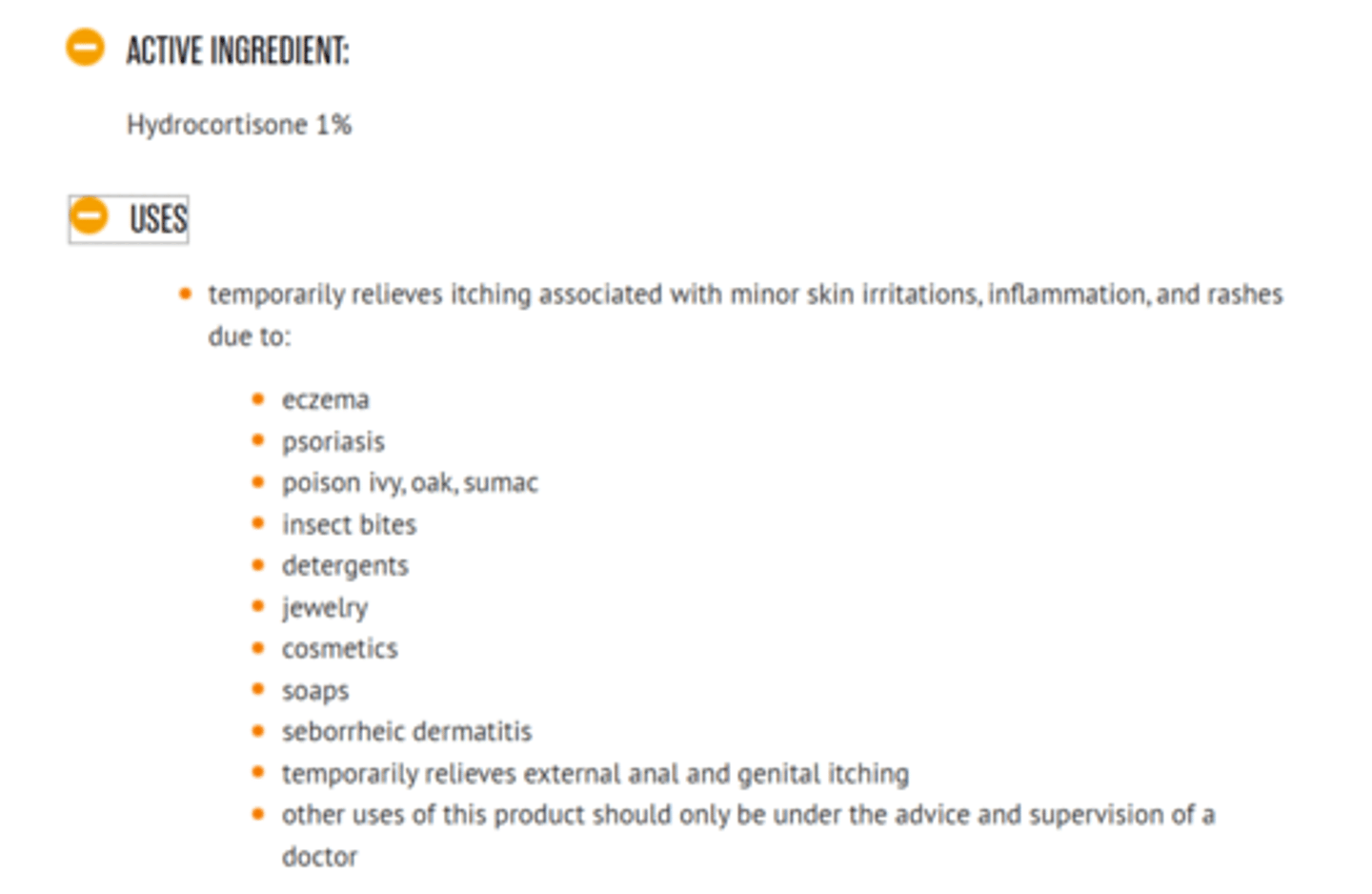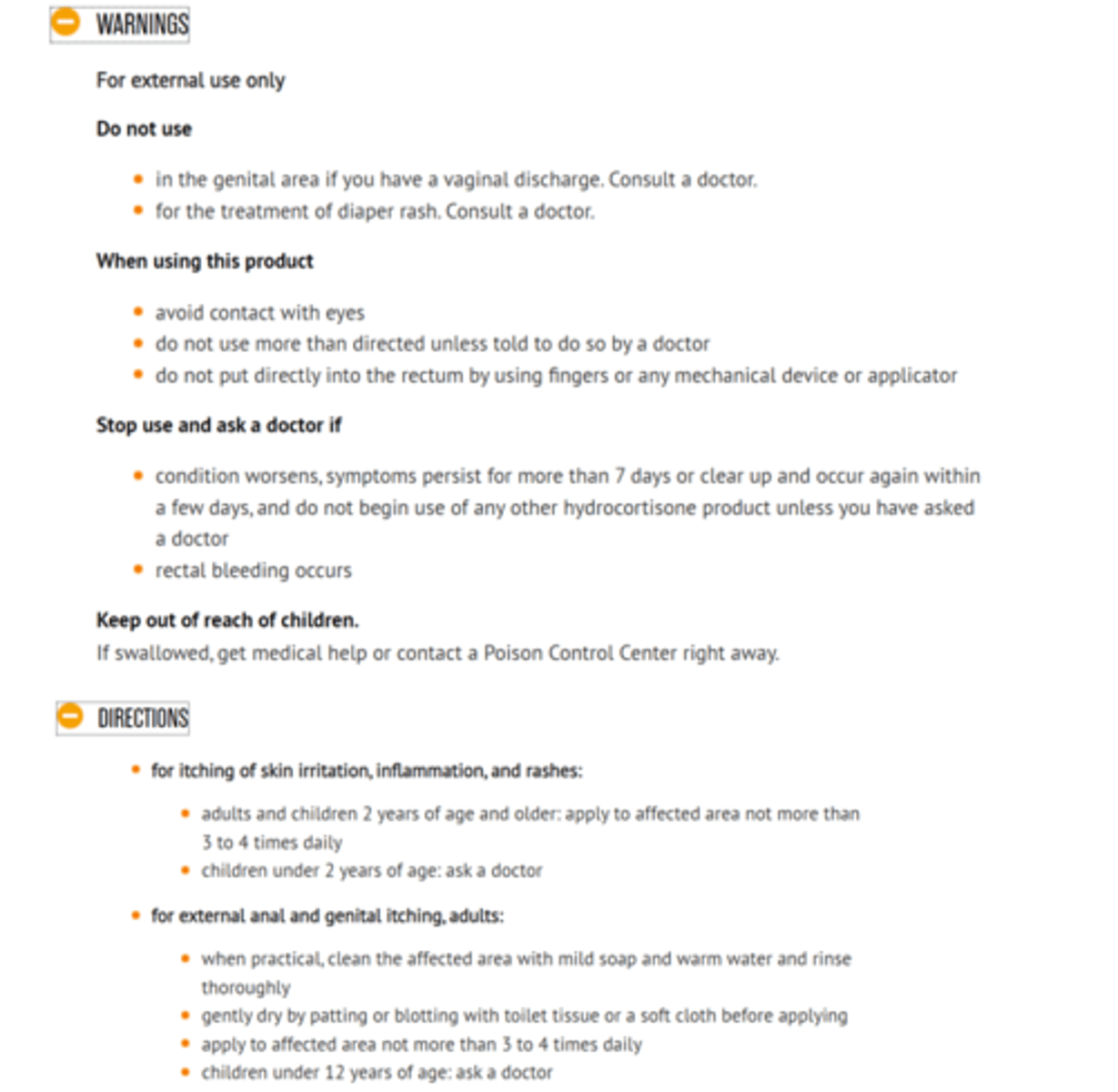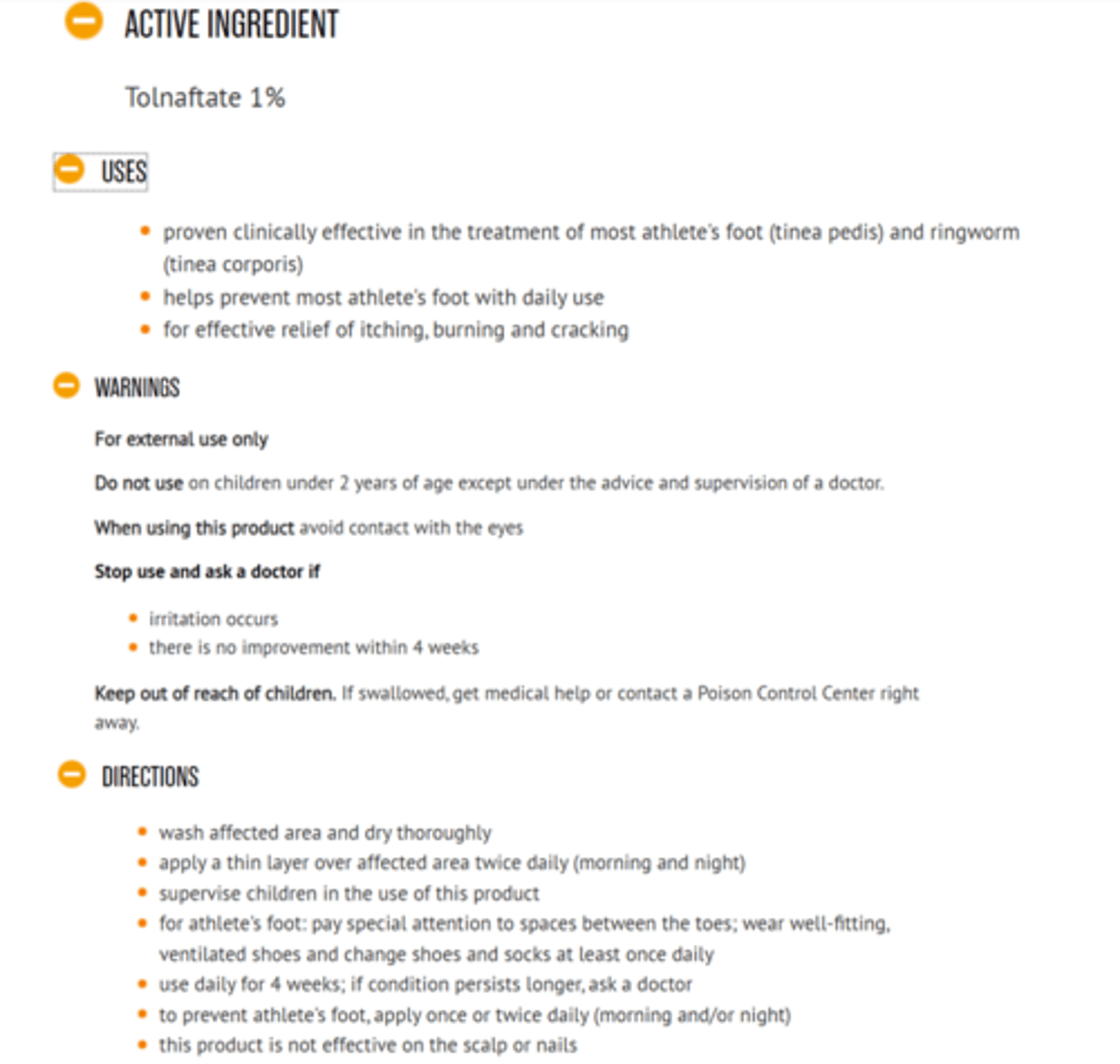Patient Care 1 ALS 3 (Dermatology)
1/106
There's no tags or description
Looks like no tags are added yet.
Name | Mastery | Learn | Test | Matching | Spaced |
|---|
No study sessions yet.
107 Terms
How long does turnover take in the stratum corneum in young adults?
a.) 2-4 days
b.) 1-2 weeks
c.) 1-2 days
d.) 2-4 weeks
d.) 2-4 weeks
TRUE or FALSE: Stratum corneum turnover gradually decreases with aging
FALSE
--INCREASES with aging
(BLANK) refers to the 15 to 25 layers of flattened, enlarged, overlapping cells that make up the stratum corneum
a.) Keratinocytes
b.) Corneocytes
c.) Filaggrin
d.) Proteocytes
b.) Corneocytes
TRUE or FALSE: Filaggrin is proteolyzed to produce a significant portion of the Natural Moisturizing Factor (NMF)
TRUE
Most water is within corneocytes aided by the presence of (BLANK)
a.) NMF
b.) FFA
c.) NBA
d.) FTC
a.) NMF
What is the normal water content of the stratum corneum?
a.) 5-10%
b.) 2-4%
c.) 15-20%
d.) 50-60%
c.) 15-20%
(BLANK), the shedding of the skin, can be defective if the skin dries
a.) Desquamation
b.) Permeation
c.) Granulosation
d.) Corneocytosis
a.) Desquamation
TRUE or FALSE: Low water content in the stratum corneum can cause reduced activity of enzymes that break down filaggrin into NMF
TRUE
What is the function of the Lipid Matrix of the stratum corneum?
a.) Protects against skin cancer
b.) Allows water to escape from the stratum corneum
c.) Allows substances to enter the stratum corneum
d.) Helps hold the corneocytes together and is critical to limit permeation of substances and limit transepidermal water loss
d.) Helps hold the corneocytes together and is critical to limit permeation of substances and limit transepidermal water loss
Where does the lipid matrix of the stratum corneum come from?
a.) Stratum granulosum cell secretions
b.) Keratin buildup
c.) Cancerous growths
d.) Stratum lucidum cell secretions
a.) Stratum granulosum cell secretions
Which of the following is NOT a component of the lipid matrix of the stratum corneum?
a.) Cholesterol
b.) Keratin
c.) Free Fatty Acids
d.) Ceramides
b.) Keratin
TRUE or FALSE: The skin has a very basic pH
FALSE
--Has a very ACIDIC pH
--Known as the "acid mantle"
--pH 4.5-6.2
Which of the following is an important factor of the acid mantle of the stratum corneum?
a.) Increases lipid processing enzyme function to maintain permeability barrier integrity and to avoid excessive transepidermal water loss
b.) Reduces corneodesmosome-degrading enzyme (kallikreins) function to help maintain orderly desquamation, so that you don't lose corneocytes too quickly
c.) Has antimicrobial properties that are important for the normal skin microbiome
d.) All of the above
d.) All of the above
TRUE or FALSE: The skin has the same microbiota everywhere on the body
FALSE
--Different microbiota in different areas of the skin
--Type of microbes depend on if the area is dry, moist, or sebaceous
(BLANK) is an elevated, solid, palpable lesion that is LESS than 0.5 cm in diameter
a.) Nodule
b.) Macule
c.) Papule
d.) Pustule
c.) Papule
(BLANK) is an elevated, solid, palpable lesion 0.5-1 cm in diameter, usually located in the dermis or subcutaneous tissue. The greatest portion may be beneath the skin.
a.) Nodule
b.) Macule
c.) Papule
d.) Pustule
a.) Nodule
(BLANK) is a flat, circumscribed nonpalpable lesion that differs in color from surrounding skin
a.) Nodule
b.) Macule
c.) Papule
d.) Pustule
b.) Macule
(BLANK) is a circumscribed lesion that contains pus
a.) Nodule
b.) Macule
c.) Papule
d.) Pustule
d.) Pustule
(BLANK) is a rounded or flat-topped, pale red papule or plaque that commonly disappears within 24 to 48 hours
a.) Wheal
b.) Vesicle
c.) Plaque
a.) Wheal
(BLANK) is a circumscribed lesion 1 cm or less in diameter that contains liquid (clear, serous, or hemorrhagic)
a.) Wheal
b.) Vesicle
c.) Plaque
b.) Vesicle
(BLANK) is a circumscribed, scaly, palpable lesion greater than 1 cm in diameter. Most of these types of lesions are elevated.
a.) Wheal
b.) Vesicle
c.) Plaque
c.) Plaque
TRUE or FALSE: Diaper dermatitis is likely underreported, affects male and female babies equally, and peak incidence is between 9 and 12 months of age
TRUE
Which causes diaper dermatitis?
a.) Hydration
b.) Dehydration
a.) Hydration
Which causes diaper dermatitis?
a.) Low pH
b.) High pH
b.) High pH
What is the maximum amount of days that diaper dermatitis can be self-treated without intervention by a doctor?
a.) 2 days
b.) 5 days
c.) 7 days
d.) 14 days
c.) 7 days
Which of the following medications is the ONLY product type that is considered safe and effective for use in diaper dermatitis without medical referral?
a.) Steroid creams (ex. Clotrimazole)
b.) Skin Protectants (ex. Desitin)
c.) Antibiotic ointments (ex. Neosporin)
d.) Topical oils (ex. Tea Tree Oil)
b.) Skin Protectants (ex. Desitin)
TRUE or FALSE: Atopic dermatitis occurs in the first year of life in 60% of cases, and by the age of 5 in almost 85% of cases
TRUE
What is the pathophysiology of atopic dermatitis?
a.) Impaired skin barrier function
b.) Overactive immune response
c.) Overhydration of the skin
d.) A and B
e.) B and C
d.) A and B
--Impaired skin barrier function
--Overactive immune response
TRUE or FALSE: You are excluded from self-treatment of atopic dermatitis if the condition is mild to moderate
FALSE
--Excluded if condition is moderate to severe
What percentage of BSA must the atopic dermatitis affect to exclude self-treatment?
a.) Greater than 10%
b.) Greater than 2%
c.) Greater than 5%
d.) Greater than 20%
a.) Greater than 10%
TRUE or FALSE: OTC Cortizone (Hydrocortisone) is ok to use to self-treat atopic dermatitis for patients 2 and older
TRUE
What condition is benefited by the "soak and seal" approach?
a.) Diaper Dermatitis
b.) Atopic Dermatitis
c.) Fungal Infections
d.) Acne Vulgaris
b.) Atopic Dermatitis
TRUE or FALSE: Dermatophytes only infect keratinized tissue
TRUE
TRUE or FALSE: Dermatophytes infect the skin by adhering to the stratum corneum, then penetrating through compromised sections of it, then surviving the host's immune response
TRUE
TRUE or FALSE: Self-care for dermatophyte infections is limited to topical and oral medications
FALSE
--Only TOPICAL medications
TRUE or FALSE: Hydrocortisone can worsen fungal infections
TRUE
--Due to suppressed immune response
Which of the following refers to ringworm?
a.) Tinea pedis
b.) Tinea corporis
c.) Tinea cruris
b.) Tinea corporis
Which of the following refers to athlete's foot?
a.) Tinea pedis
b.) Tinea corporis
c.) Tinea cruris
a.) Tinea pedis
Which of the following refers to jock itch?
a.) Tinea pedis
b.) Tinea corporis
c.) Tinea cruris
c.) Tinea cruris
What is the brand name for Miconazole?
a.) Lotrimin
b.) Tinactin
c.) Lotrimin AF
d.) Lamisil AT
c.) Lotrimin AF
What is the brand name for Tolnaftate?
a.) Lotrimin
b.) Tinactin
c.) Lotrimin AF
d.) Lamisil AT
b.) Tinactin
What is the brand name for Terbinafine?
a.) Lotrimin
b.) Tinactin
c.) Lotrimin AF
d.) Lamisil AT
d.) Lamisil AT
What is the brand name for Butenafine?
a.) Lotrimin
b.) Lotrimin Ultra
c.) Lotrimin AF
d.) Lamisil AT
b.) Lotrimin Ultra
What is the brand name for Clotrimazole?
a.) Lotrimin
b.) Lotrimin Ultra
c.) Lotrimin AF
d.) Lamisil AT
a.) Lotrimin
What is the maximum amount of time you can self-treat Tinea cruris (jock itch)?
a.) 1 week
b.) 2 weeks
c.) 3 weeks
d.) 4 weeks
b.) 2 weeks
--4 weeks for Tinea pedis (athlete's foot) and Tinea corporis (ringworm)
Which of the following medications is NOT indicated for Tinea cruris (jock itch)?
a.) Lotrimin (Clotrimazole)
b.) Lotrimin AF (Miconazole)
c.) Tinactin (Tolnaftate)
d.) Lamisil AT (Terbinafine)
e.) Lotrimin Ultra (Butenafine)
c.) Tinactin (Tolnaftate)
Which of the following options is NOT part of the pathophysiology for acne vulgaris?
a.) Increase in Estrogen production
b.) Hyperseborrhea (overproduction of sebum)
c.) Follicular corneocyte proliferation
d.) Cutibacterium acnes proliferation
a.) Increase in Estrogen production
--An increase in ANDROGEN production (typical of puberty) causes acne vulgaris
What percentage of adolescents are affected by acne vulgaris?
a.) 20%
b.) 85%
c.) 72%
d.) 98%
b.) 85%
Who tends to have adult acne more commonly?
a.) Men
b.) Women
b.) Women
Which comedones are known as blackheads?
a.) Open
b.) Closed
a.) Open
--Closed comedones are known as whiteheads
TRUE or FALSE: Self-treatment for acne is excluded when condition is moderate to severe
TRUE
TRUE or FALSE: Regular consumption of omega-3 fatty acids may help reduce acne
TRUE
TRUE or FALSE: The core of topical therapy for acne treatment is retinoids, and an OTC example of this is Adapalene
TRUE
How long does the full therapeutic effect of Adapalene take?
a.) 1-2 weeks
b.) 3-4 weeks
c.) 4-6 weeks
d.) 8-12 weeks
d.) 8-12 weeks
--It takes 8 weeks for a microcomedone to mature, so therapy must be continued beyond this duration to assess efficacy
TRUE or FALSE: It is still ok to self-treat dermatophyte infections if the scalp or nails are involved
FALSE
--Must seek medical treatment if scalp or nails are involved
TRUE or FALSE: Ringworm and athlete's foot are both more common in males than in females
TRUE
What is the pH of traditional (older) soaps, such as those containing sodium tallowate?
a.) Acidic
b.) Basic
b.) Basic
--Can irritate the skin due to disruption of the acid mantle
Syndets are synthetic surfactants, synthesized from oils, fats, and petroleum products. They are more acidic in nature, and so are more friendly to the acid mantle and are less irritating than traditional soaps. What is an example of a syndet?
a.) Dove
b.) Sodium Tallowate
c.) Aquaphor
d.) Vaseline
a.) Dove
(BLANK) refers to products like Vaseline that block transepidermal water loss. They are generally the most effective type of moisturizer.
a.) Humectants
b.) Occlusives
c.) Emollients
b.) Occlusives
(BLANK) refers to oil-based products like lanolin and dimethicone, that fill in the spaces between the corneocytes and lead to smoother skin.
a.) Humectants
b.) Occlusives
c.) Emollients
c.) Emollients
(BLANK) refers to products like urea and glycerin that are hygroscopic in nature and enhance water absorption from the dermis into the epidermis. These products are cousins of Natural Moisturizing Factor (NMF).
a.) Humectants
b.) Occlusives
c.) Emollients
a.) Humectants
TRUE or FALSE: Humectants can have an opposite effect in dry climates, and can cause water loss in the skin
TRUE
TRUE or FALSE: Colloidal oatmeal is an FDA-approved protectant that can help relieve minor skin irritation and itching. Its active component, Avenanthramides, have anti-inflammatory and antipruritic activity.
TRUE
TRUE or FALSE: Skin protectants for diaper dermatitis work by acting as a physical barrier between the skin and external irritants, and absorb moisture away from the skin
TRUE
(BLANK) is a hydrophobic skin protectant that is commonly used in the treatment of diaper dermatitis, though it does have the drawback of requiring soap to remove it from the skin
a.) Lanolin
b.) Petrolatum
c.) Zinc oxide
d.) Dimethicone
c.) Zinc oxide
(BLANK) is an oleaginous skin protectant used in the treatment of diaper dermatitis, though it is greasy and uncomfortable for the patient
a.) Lanolin
b.) Petrolatum
c.) Cornstarch
d.) Dimethicone
b.) Petrolatum
(BLANK) comes from sheep's wool and is a bacteriostatic skin protectant used in treatment of diaper dermatitis, with the drawback of contact sensitization
a.) Lanolin
b.) Petrolatum
c.) Cornstarch
d.) Dimethicone
a.) Lanolin
(BLANK) is a loose powder that is used in treatment of diaper dermatitis, known for its absorbent properties. However, it can be inhaled by the patient, causing problems.
a.) Lanolin
b.) Petrolatum
c.) Cornstarch
d.) Dimethicone
c.) Cornstarch
(BLANK) is a silicone-based oil that repels water and soothes and counteracts inflammation from diaper dermatitis
a.) Mineral oil
b.) Glycerin
c.) Cornstarch
d.) Dimethicone
d.) Dimethicone
(BLANK), a treatment for diaper dermatitis, coats the skin with a water-impenetrable film that must be washed off with each diaper change to avoid buildup in pores and subsequent folliculitis
a.) Mineral oil
b.) Glycerin
c.) Cornstarch
d.) Dimethicone
a.) Mineral oil
(BLANK), a treatment for diaper dermatitis, requires consultation with a primary care provider before use in infants
a.) Mineral oil
b.) Glycerin
c.) Cornstarch
d.) Dimethicone
b.) Glycerin
TRUE or FALSE: Hydrocortisone should not be used for diaper dermatitis, as it is contraindicated in patients younger than 2 years old due to interference with an infant's pituitary-adrenal axis, and can cause a secondary infection due to its immunosuppressant properties
TRUE
TRUE or FALSE: To prevent injuries due to scratching caused by itchy atopic dermatitis, socks should be worn on hands at night and nails should be kept short
TRUE
In atopic dermatitis, while the skin is still damp after washing, when should moisturizer be applied?
a.) Within 5 minutes of washing
b.) Within 1 minute of washing
c.) Within 3 minutes of washing
d.) Within 10 minutes of washing
c.) Within 3 minutes of washing
--"Soak and seal"
When should you seek medical attention for atopic dermatitis?
a.) 7-8 days of ineffective self-treatment
b.) 2-3 days of ineffective self-treatment
c.) 14-16 days of ineffective self-treatment
d) 1-2 days of ineffective self-treatment
b.) 2-3 days of ineffective self-treatment
TRUE or FALSE: Tea tree oil is completely useless in treating dermatophyte infections
FALSE
--Somewhat effective in higher concentrations
TRUE or FALSE: Treatment of dermatophyte infections with ajoene, a component of garlic, has yielded positive results
TRUE
TRUE or FALSE: It is best to apply antifungal medications to a moist area to increase absorption
FALSE
--Must apply to DRY area, as moist areas will cause fungus to grow even more
TRUE or FALSE: Salicylic acid, a medication for acne, has comedolytic effects that are concentration-dependent
TRUE
How often should salicylic acid be applied for treatment of acne?
a.) 1 to 3 times daily as needed
b.) 2 to 4 times daily as needed
c.) 5 to 6 times daily as needed
d.) Only 1 time daily
a.) 1 to 3 times daily as needed
TRUE or FALSE: With topical application of 2% salicylic acid, up to 20% of the drug can be absorbed into the skin
TRUE
TRUE or FALSE: Salicylic acid products can protect from UVB rays, though patients should still wear sunscreen outside on sunny days just in case
TRUE
TRUE or FALSE: Tea tree oil is completely ineffective in reducing acne-induced lesions
FALSE
--Effective at this
TRUE or FALSE: Ointments are not used in self-treatment of acne, due to their occlusive nature that can worsen the condition
TRUE
New patients on acne medication should start on the (LOWEST/HIGHEST) strength of the medication
Lowest
What is the most effective treatment form for acne?
a.) Cream
b.) Ointment
c.) Lotion
d.) Gel
d.) Gel
TRUE or FALSE: Medicated cleansing products (bars and liquids) are less effective in treating acne, as they leave little active ingredient residue on the skin
TRUE
TRUE or FALSE: Adapalene and Benzoyl Peroxide both protect against sunburn
FALSE
--Can cause sunburn
TRUE or FALSE: Symptoms of acne may actually become worse after first starting Adapalene
TRUE
TRUE or FALSE: Benzoyl peroxide inhibits the growth of Cutibacterium acnes, and helps unclog pores by having a mild peeling effect
TRUE
TRUE or FALSE: Salicylic acid is more effective than adapalene and benzoyl peroxide at treating acne
FALSE
--Less effective
(BLANK) bases are oleaginous bases that are insoluble in water and cannot absorb water, are very occlusive, and are greasy. Examples include Vaseline.
a.) Hydrocarbon base
b.) Absorption base
c.) W/O Emulsion base
d.) O/W Emulsion base
a.) Hydrocarbon base
(BLANK) bases are oleaginous bases that can absorb water, and are mostly occlusive, though this occlusiveness is limited due to its ability to absorb water. Examples include lanolin.
a.) Hydrocarbon base
b.) Absorption base
c.) W/O Emulsion base
d.) O/W Emulsion base
b.) Absorption base
(BLANK) bases are semisolid emulsions that do not absorb much water, and are slightly greasy but mostly water-washable. Examples include Eucerin.
a.) Hydrocarbon base
b.) Absorption base
c.) W/O Emulsion base
d.) O/W Emulsion base
c.) W/O Emulsion base
(BLANK) bases are semisolid emulsions that absorb varying amounts of water, and are water-washable. Examples include creams.
a.) Hydrocarbon base
b.) Absorption base
c.) W/O Emulsion base
d.) O/W Emulsion base
d.) O/W Emulsion base
Desitin (Diaper Dermatitis)

Cortizone 10 Cream (Atopic Dermatitis)--Active Ingredient and Uses

Cortizone 10 Cream (Atopic Dermatitis)--Warnings and Directions

Tinactin Cream (Dermatophyte Infection)

Lamisil AT Cream (Dermatophyte Infection)--Active Ingredient, Uses, and Warnings
